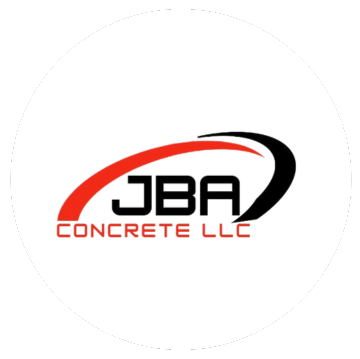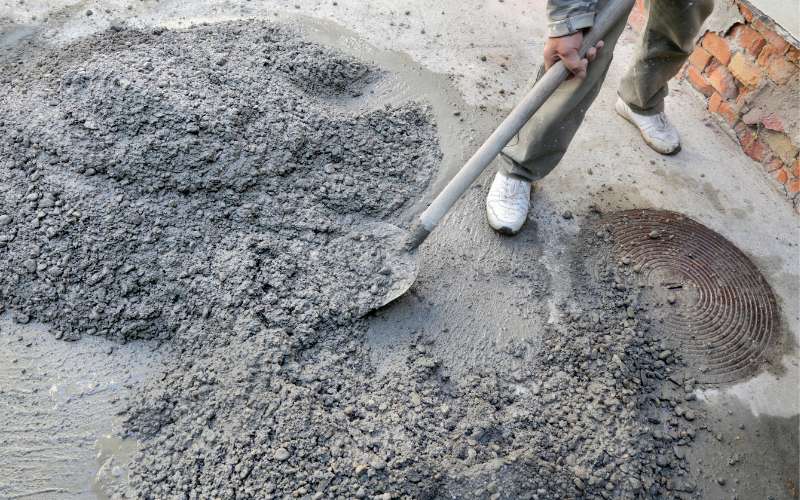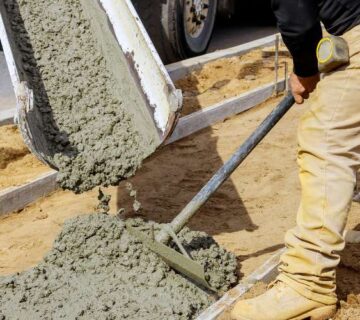Concrete plays a vital role in construction, and a key component in its strength is aggregate. Understanding the role of aggregate in concrete mixes is essential to creating durable, reliable structures. Did you know that the right mix of aggregate can significantly improve concrete quality? This blog dives into how aggregates influence concrete’s strength, durability, and texture, helping you make better choices for your next project.
The Essential Impact of Aggregate in Concrete Strength and Durability
Concrete relies on aggregate as a primary component that enhances its durability and functionality. Let’s explore how different types of aggregates affect the final concrete product, from choosing the right type to understanding how each contributes to a mix’s strength, texture, and longevity.
What is Aggregate in Concrete?
Aggregates are granular materials, such as sand, gravel, or crushed stone, mixed into concrete. They make up about 60-80% of the total volume, serving as a filler to increase the concrete’s stability and reduce shrinkage. Aggregates help control concrete strength and density, giving it resilience to withstand environmental stresses.
Types of Aggregate and Their Impact
Choosing the right type of aggregate is crucial. The two main categories are fine and coarse aggregates, each impacting concrete in distinct ways.
- Fine Aggregates: Typically sand or crushed stone smaller than 5mm, fine aggregates help create a smooth mix. They fill in gaps between coarse aggregates, which prevents voids and enhances the concrete’s texture.
- Coarse Aggregates: Larger particles like gravel, these add strength and bulk. Coarse aggregates ensure the structure remains robust and resistant to fractures.
Using both types balances the concrete’s texture and strength, allowing it to maintain form and resist cracking.
Key Properties of Quality Aggregate
To ensure high-quality concrete, choosing aggregate with the right properties is essential. Here’s what to consider:
- Size and Shape: Well-graded aggregates in varied sizes fit together well, improving concrete’s density and reducing voids.
- Strength: Durable aggregates enhance concrete’s load-bearing ability, helping it resist wear over time.
- Absorption: Aggregates with low water absorption ensure the mix doesn’t weaken due to excess moisture, maintaining consistency.
These properties enable concrete to withstand heavy loads and environmental wear, essential for long-lasting structures.
The Importance of Aggregate Proportioning
Getting the right mix ratio between aggregate, cement, and water is vital. Proportioning ensures the mix achieves desired properties, such as strength, durability, and workability.
- Strength and Durability: A higher proportion of coarse aggregate results in stronger concrete, suitable for large structures.
- Workability: Adjusting the proportion of fine aggregate improves workability, ideal for decorative or detailed concrete projects.
A balanced mix is essential to create concrete that meets the specific needs of each project.
How Aggregate Impacts Concrete’s Environmental Resistance
Concrete exposed to elements like freeze-thaw cycles or moisture requires aggregate with high resistance. The right type of aggregate reduces damage from temperature changes and prevents cracking, extending the life of concrete surfaces.
- Freeze-Thaw Resistance: Aggregates that resist water absorption help prevent freeze-thaw damage, ideal for colder climates.
- Abrasion Resistance: Strong aggregates reduce surface wear, especially in high-traffic areas, ensuring surfaces stay intact.
Selecting Aggregate for Sustainable Concrete Mixes
Choosing recycled or local aggregates can make concrete production more eco-friendly. By selecting sustainable materials, projects can reduce their carbon footprint while maintaining quality and durability.
- Recycled Aggregate: Using recycled concrete as aggregate reduces waste and energy consumption.
- Locally Sourced Aggregate: Sourcing aggregate locally minimizes transportation emissions, contributing to sustainability.
Opting for eco-friendly aggregate choices meets modern construction standards and supports environmental responsibility.
Choosing the Right Aggregate for Lasting Concrete
Selecting the appropriate aggregate for concrete is crucial to achieving a durable and resilient structure. Understanding the role of aggregate in concrete mixes allows you to make informed choices for every project. If you’re ready to create stronger, more sustainable concrete, don’t hesitate to reach out! Contact us today to discuss how the right mix can elevate your project’s success.





No comment